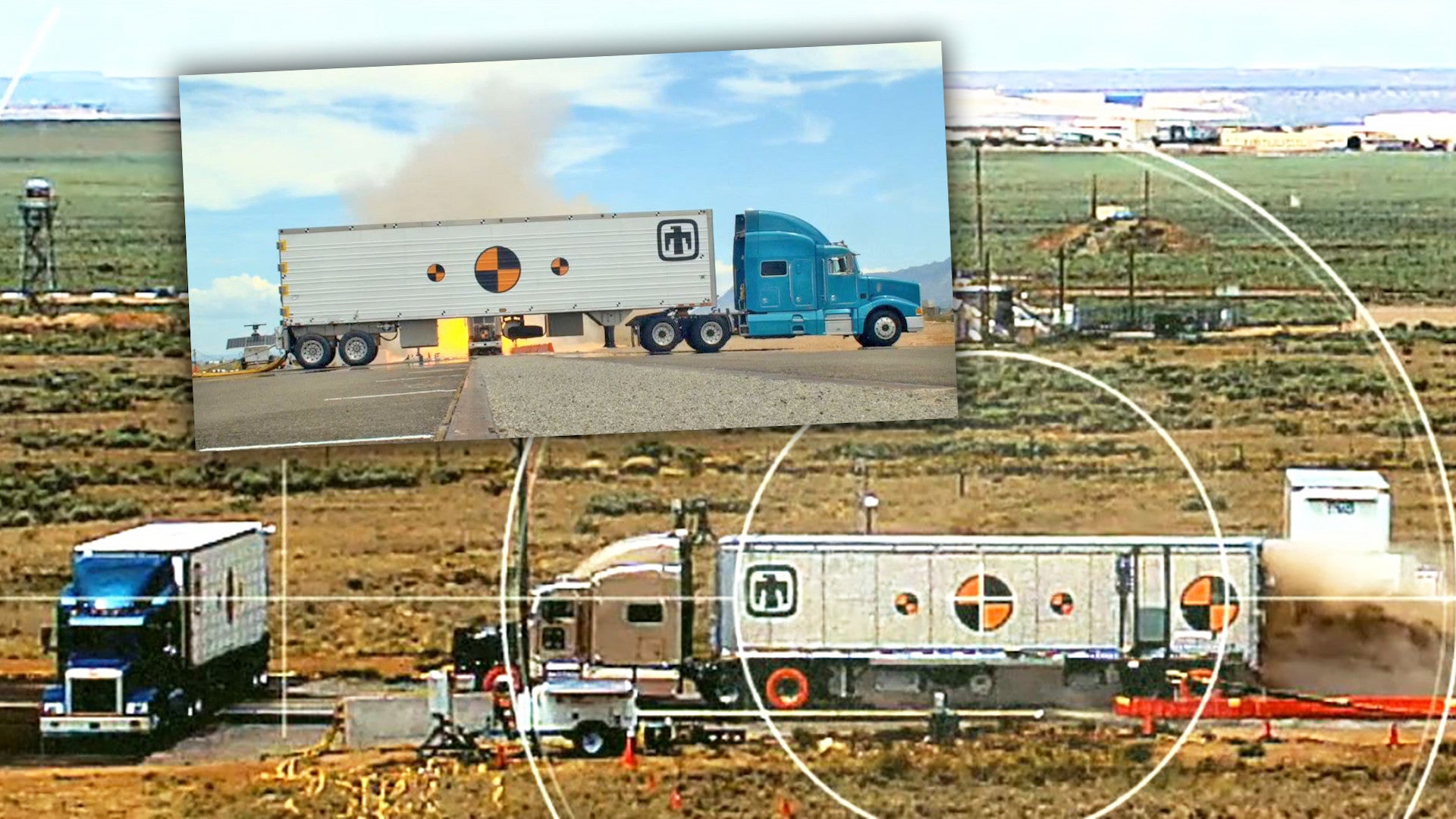In what was said to be the largest such test in decades, employees at Sandia National Laboratories recently used rockets to propel a tractor-trailer truck down a track and into a prototype of a new semi-trailer designed to securely move nuclear warheads around the country. This destructive testing is part of the qualification process of the new Mobile Guardian Transporter, or MGT, and the data will also be used to help model accident scenarios involving trucks carrying America’s deadliest weapons.
Sandia revealed the test, which it said occurred sometime over the summer at its rocket sled track facility in New Mexico, earlier this month. Development of the MGT first began in 2015 and construction of the initial prototype, which was destroyed in this experiment, was completed by March of this year. The MGTs will replace the existing Safeguards Transporters, or SGTs, that the National Nuclear Security Administration’s (NNSA) Office of Secure Transportation (OST) uses to truck nuclear weapons and other sensitive nuclear material by road around the country. You can read all about the SGTs and OST in this past War Zone feature.
“I was glad to see the rockets fired; I was glad to see it was successful,” Jim Redmond, the Senior Manager of the MGT program, said in a statement. “It was tense. The entire team, including partners from LANL [Los Alamos National Laboratory] and Lawrence Livermore [National Laboratory], were excited and relieved. There’s a lot of pride among the team, as well as the government sponsors, that we are greatly increasing our understanding of accident environments.”
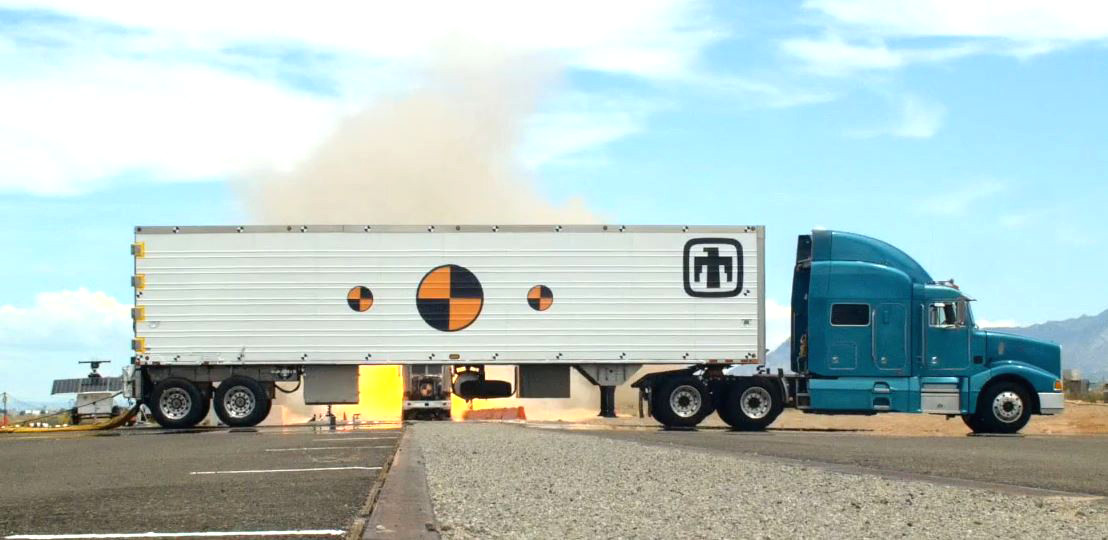
The last time researchers and engineers at Sandia performed any kind of similar experiment was around 20 years when they slammed another truck into a fixed barrier. An official press release did not say what design was tested in that previous instance, but it was likely an SGT, examples of which OST first began receiving in the 1990s
“About two decades ago, Sandia crashed a truck into an immovable barrier, but this is the first time we’ve done a test in this configuration, where we took a truck at full capacity and propelled it down the track and hit our test article sitting idly at the end of it,” Redmond explained. “In two decades, you can imagine how much technology has advanced in terms of our ability to measure responses of the trailer and its contents.”

It’s not hard to see the value of this kind of destructive testing for a vehicle like this. It’s important to know how any car or truck might respond in various accident scenarios, but it’s even more critical when you know it will be carrying nuclear bombs or other radioactive payloads.
It’s important to note that modern nuclear weapons do use insensitive conventional explosives, which are highly resistant to going off accidentally due to shock or fire, to trigger an actual atomic reaction. However, an accident on the road involving one of these trucks still runs the risk of damaging the weapons and sending nuclear material, explosives, and other potentially hazardous material flying. The same general concerns apply if the truck is simply carrying a load of nuclear material by itself.
“The transportation mission is a critical component of an effective nuclear deterrent,” Redmond, the MGT program manager, added. “It provides needed assurance to the American public and our allies of the safety and security of our stockpile. You’ve got to be able to ship nuclear assets safely and securely or you don’t have a deterrence program.”
When it comes to the MGT, its payloads aren’t the only things that could become hazards in the event of an accident, either. We don’t know the exact features of this trailer design, which Sandia says is entirely new and not derived from the present SGT. However, we do know that the SGTs have walls that can dispense a sticky, adhesive-like foam to immobilize any unauthorized individual from trying to steal the cargo inside.
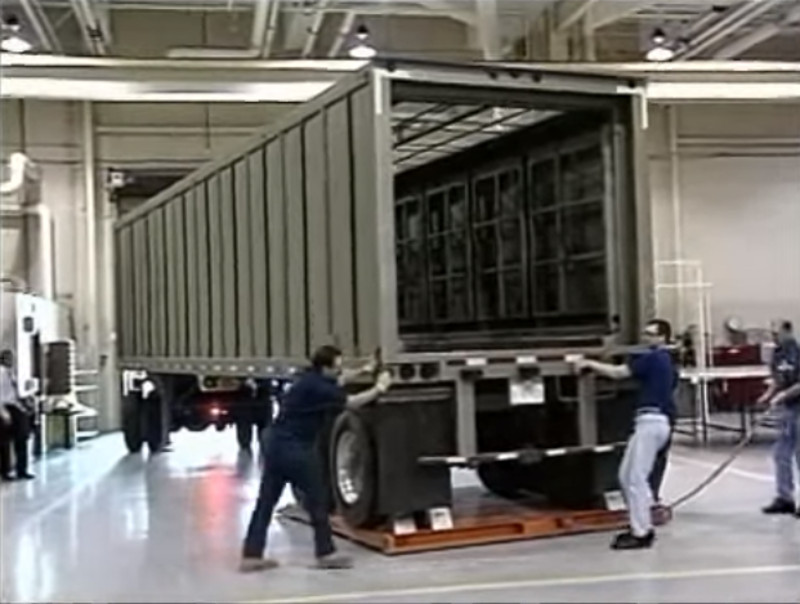
The SGT’s predecessor, the Safe Secure Trailer (SST), had tear gas to further deter intruders and explosive bolts to shear away the rear axles and make it physically impossible to tow the trailer away. A 2017 story from the Los Angeles Times says that the SGTs have a system that delivers electric shocks to anyone trying to gain entry illicitly, but makes no mention of the tear gas or the explosive bolts, and it’s unclear if those were retained in that design.
Regardless, the sticky foam and other potential elements of the trailer’s defensive suite could present additional hazards in the event of an accident. In 1991, some of the defensive systems on an SST accidentally went off as it traveled along a highway in North Dakota, reportedly causing the foam to leak from the main compartment, among other things. The exact chemical composition of the foam and how toxic it might be is unclear, but a HAZMAT team from Sandia National Laboratories subsequently went out to the site to safely dispose of it.
The video below shows U.S. Marines demonstrating various less-than-lethal capabilities, including a sticky foam that may be similar to what is used in the SGT trailers.

While this destructive test is certainly an important milestone for the MGT program, Sandia says that the ongoing COVID-19 pandemic has imposed new challenges and hardships on the project team, and it’s not clear when these vehicles may begin to actually enter service. Previously, the goal was to have the first examples on the road by 2023. The new trailers are also expected to remain in service beyond 2050.
The future MGTs, as well as the existing SGTs, are, of course, just one part of the overall security infrastructure surrounding the movement of nuclear weapons and related material by road in the United States, which you can read about more in this past War Zone feature. Pictures of the destructive test indicate that the same heavily modified and armored Peterbilt tractor trucks that pull the SGTs today will be used with the new MGTs, as well. Armed personnel from the NNSA’s OST guard the vehicles throughout their trips and are accompanied by security guards in other vehicles. If a major contingency arises, NNSA can also deploy elements of its Special Response Force to help secure the truck’s sensitive cargo.
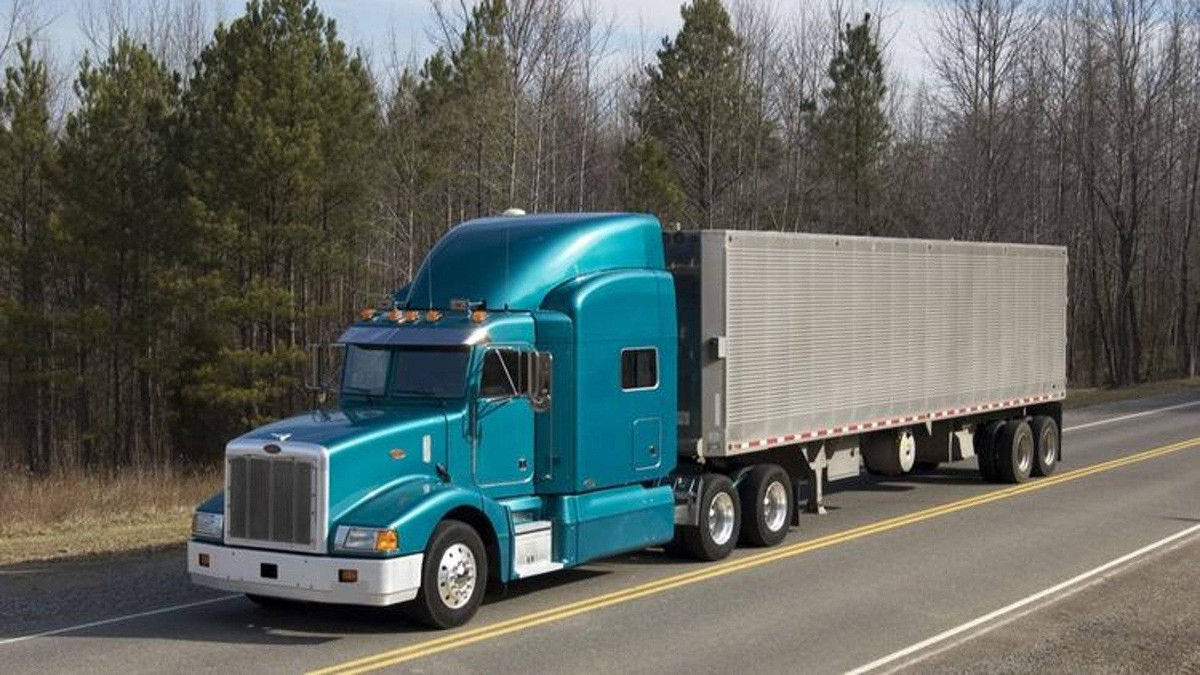
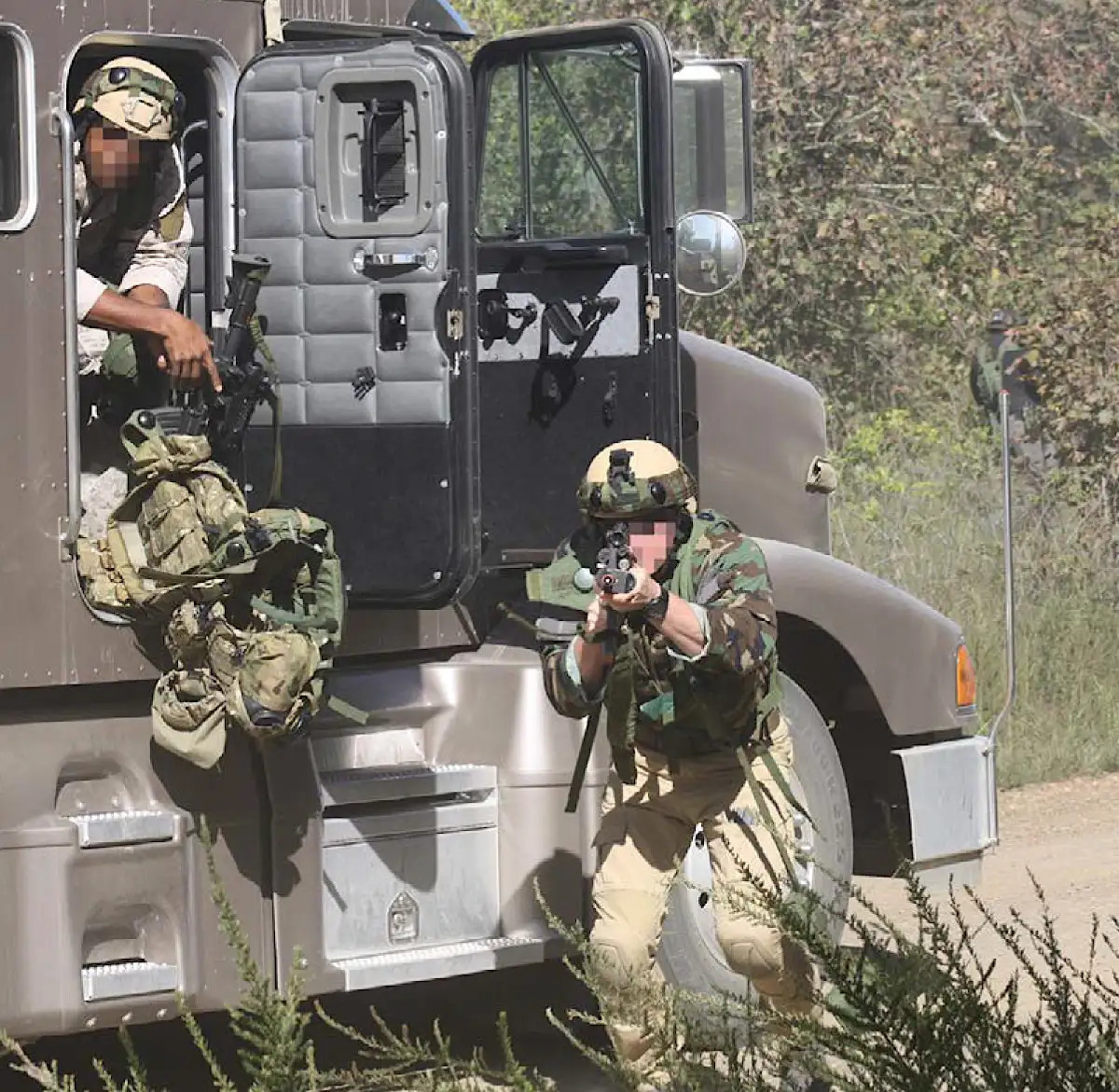
It’s also important to note that there have been concerns in the past about low morale and toxic work culture within OST. A deep investigative report that the Los Angeles Times published in 2017, and that is still worth reading in full, highlighted years of reports of serious disciplinary and safety infractions, including numerous alcohol-related incidents and the pervasiveness of the office’s personnel carrying unauthorized weapons.
When it comes to the MGT’s design, at least, Sandia has now clearly taken rather dramatic steps to help ensure that it is reliable, safe, and secure to use for transporting the most destructive weapons in the U.S. military’s arsenal and other highly sensitive nuclear materials.
Contact the author: joe@thedrive.com
